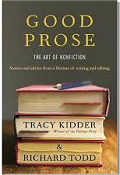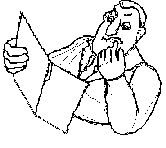

| Book of the Month | ||
 |
Good Prose: The Art of Nonfiction |  |
Publisher: Random House
Authors: Tracy Kidder & Richard Todd
$16.00 (paperback)
ISBN: 978-0812982152
Writing good prose is difficult, whether for a student tackling his first English language exam or for a hardened journalist with dozens of years of experience. Of course, what counts as 'good prose' is very different in these two cases – and that's one of the problems. What counts as good prose depends on who is reading a text and why.
This book is partly a guide as to how to write non-fiction well, and partly a memoir about the experiences of the two authors in the field of non-fiction writing. To be clear from the beginning, this book is not just for advanced students of English, it is written to guide and advise even masters of the subject. The sub-title explains this well 'Stories and advice from a lifetime of writing and editing'.
As one might expect, the prose of the book itself is clear and precise, but it assumes that the readers are proficient at English and understand techniques such as self-reference, understatement, and grandiloquence.
The two lifetimes in the sub-title (one spent writing and the other editing) are compressed into 195 pages of well-spaced text, and this includes a bibliography and index. There are no illustrations. The chapters deal with types of non-fiction and how to handle them, from memoirs to magazine articles. Later chapters include guidance on style and usage. In fact one of the most useful sections, from a practical point of view, is the 'Usage' section from pp 175-183. Here the authors explain many modern usages and mis-usages, and clearly explain why certain terms are inadvisable or simply plain wrong.
One of the issues with the book is that it is partly a guide to good prose, as the title suggests, and partly autobiographical anecdotes about the attempts by the authors to produce this. The problem is that the reader who is looking for advice on how to write better will be annoyed and distracted by the autobiographical details, and the reader who has come for a good story will occasionally end up deep in abstruse discussions on (for example) the best time to use the subjunctive.
So who is this book for? It is certainly not for any student of English working below the level of proficiency. Proficiency-level students will find it useful because the level of prose is at about the same level as examiners like to use in the reading exam. Once candidates for the Proficiency reading exam can read and understand this book, the exam itself should be straightforward. Those writing a non-scientific thesis at university level will also find the suggested approaches to writing and organization useful, and those thinking of attempting writing at the professional or semi-professional level will certainly find a lot they can use. Above all, the book makes an excellent case for the necessity of good editing and re-writing – two things which much of the turgid self-published prose on the internet desperately needs.
Verdict: Verdict – Not one thing or the other, but well-written anyway
Assessment 6/10